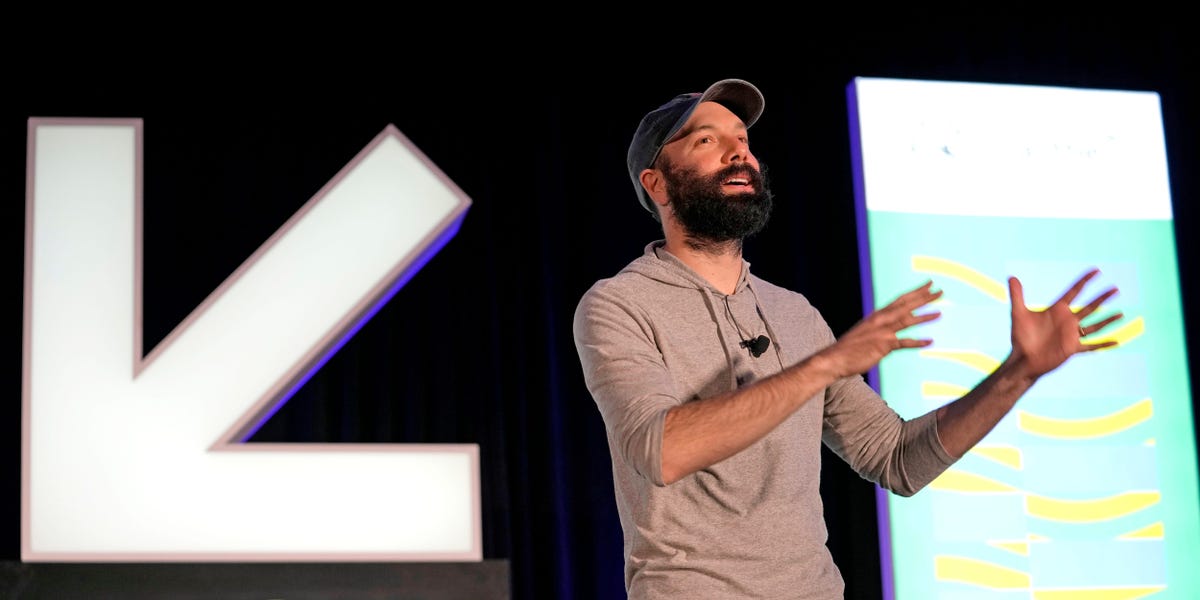The creator economy has a new favorite word: Community.
From product updates to startup rebrands, community has been at the forefront of press releases these past several months.
In September, Patreon CEO Jack Conte announced that the subscription platform used by creators would now be focused on community tools that make the platform more interactive and social.
“We’re a decade old,” Conte told Business Insider at the time. “We’re expanding beyond membership and we’re thinking of ourselves more now, not as a membership company, but as a creator company, as a fandom company, as a company that helps creators and their fandoms build energized communities and be successful.”
Patreon soon after overhauled its branding and mobile app, prioritizing features like group chats and in-app profiles.
Creator-economy startups left and right are pouncing on our desire to belong and feel connected — and they are tapping creators to build, lead, and make money from these spaces.
Kajabi, a popular online course platform, recently announced that its creators had earned more than $6 billion using its platform. After acquiring online community startup Vibely in 2022, Kajabi introduced its own “Communities” feature, which offers creators tools to directly engage with their students and fans with exclusive group chats, calls, and a central hub.
“We live in a time where there’s information overload, and there’s this attention economy,” said Teri Yu, head of product and communities at Kajabi, and former CEO of Vibely. “Being able to go to a community to find real recommendations from real people about your skincare products, or how to actually learn the five steps to creating a book that’s not just a sponsored by X and Y company — those are all things that make communities stand out today.”
Earlier this month, Fourthwall, which began as a creator merchandise startup, also unveiled a tool that lets creators build their own branded apps, where they can send notifications announcing new merch drops or content and interact directly with fans who pay a monthly or annual membership fee.
“Keeping in contact with your community is extremely challenging,” Fourthwall cofounder Eli Valentin told BI.
Instead of building websites for creators, Fourthwall’s apps for creators help streamline a creators’ members-only content to a unique, standalone location with its own notifications that don’t get lost in an inbox or on another platform. This could, in theory, help creators bolster engagement among their paying members, making them more likely to interact with the content and continue to pay those recurring fees.
“Thriving communities work when people are participating in it,” Valentin added.
The wave of creator-economy startups pivoting toward community-building products shouldn’t come as a surprise in an age of saturated social networks, AI chatbots, and a loneliness epidemic on the rise.
There’s a reason why social-media users are opting for group chats or niche online communities on apps like Discord, instead of posting photos and videos into the void. At the same time, we’re seeing social-media giants like Meta’s Instagram doubling down on features like Close Friends and DMs.
Beneath the noise, however, startups chasing after nebulous goals of building community are onto something. Founders, creators, and investors alike are all eyes and ears.
What even is a ‘community,’ anyway?
While community has become a buzzword thrown around by creator-economy startup founders and tech executives, people have varying definitions of what it is.
For some, community is just another word for “audience,” or all of the people who follow and consume your content. For others, it’s the people in the comment section of YouTube videos or Instagram posts. Brands even claim their customers as a community.
Yu sees “real community,” however, as peer-to-peer interactions where people are engaging with people — “developing relationships, supporting each other, helping each other answer questions.”
Hugo Amsellem — a creator-economy startup advisor and angel investor, who is building a fund to back startups solving for the loneliness epidemic — said he sees community as a group of people who have a shared identity.
Or, as Patreon’s Conte puts it: “People should feel something. They should feel a part of something bigger than themselves. And we want every fan on Patreon to feel a sense of belonging — like this is their corner of the internet.”
Those are big, lofty ideas. But these platforms aren’t bullish on communities because of the warm, fuzzy feelings. There’s a market there, too.
People are willing to pay for community
“Belonging is the new luxury,” as travel startup Dharma wrote in a Notion pitch document it sent to investors.
According to Kajabi, the communities on its platform have contributed $87 million to the overall $6 billion in creator revenue its users have earned.
Rob Lennon, who manages a community of AI enthusiasts using Kajabi and Discord, has earned over $500,000 by selling courses and recurring memberships that unlock features like group chats, one-on-one sessions, and unique AI bots. (BI verified these earnings with documentation provided by Lennon.)
That’s possible because of the monthly recurring earnings that Lennon makes from the membership feature Kajabi has.
Platforms like Patreon, Fourthwall, OnlyFans, and Substack all use this model. And other platforms have followed suit, like Teachable, which launched a membership tier for its users selling courses in October.
Even Meta and TikTok have released tools to help creators earn money with monthly subscriptions that often unlock community tools like exclusive group chats, whether in-app or re-directing fans to a Discord link.
As creator-economy startups struggle to crack profitability in the wake of VC checks drying up and economic shifts, these recurring payments could give some startups a boost.
For example, Yu said that when a Kajabi community signs up members, about seven out of 10 new members return the next day, and six out of 10 remain active the next month.
Meanwhile, investors across industries are making their bets on what will make us all feel less lonely.
“In Silicon Valley, founders and investors all recognize there’s a loneliness problem,” Yu said.
Will creators be part of that equation, though?
Creators aren’t just making content — they are building communities with cult followings
Yes, the internet has likely added to our feelings of loneliness, but Amsellem sees creators as a unique answer to get us back on track.
“We need a bit of everything,” Amsellem said, adding that online communities and social platforms “are not going to solve loneliness” by themselves.
Instead, the online and niche communities we’ve built will need a “physical embodiment” and “rituals” that will give us a sense of belonging, he added.
And creators could be the ones to shepherd in this wave.
“Creators are the new priests,” Amsellem said. “Of course, it’s not about religion, it’s about assembling people.”
Yu has a similar outlook on creators as well: “We always act with the premise that creators will be the future community leaders.”
For instance, Lennon’s community on Kajabi hosts about 3,000 members — roughly the size of a small town in the US. Across all of Kajabi, the platform hosts more than 32,000 communities and over 2 million community members, per the company.
And some creators are assembling fans and their community beyond the screen. Last week, BI’s Marta Biino stopped by YouTubers KSI and Logan Paul’s Prime pop-up in London, where a line of fans stretched a block. In August, Twitch streamer Kai Cenat gathered thousands of fans in NYC for a giveaway that spiraled out of control, leading to injuries and arrests.
The momentum of creator-led communities is clear. Now it comes down to whether creators and startups will be able to harness that momentum to build and maintain safe, sustainable, and meaningful communities.
Read the full article here





